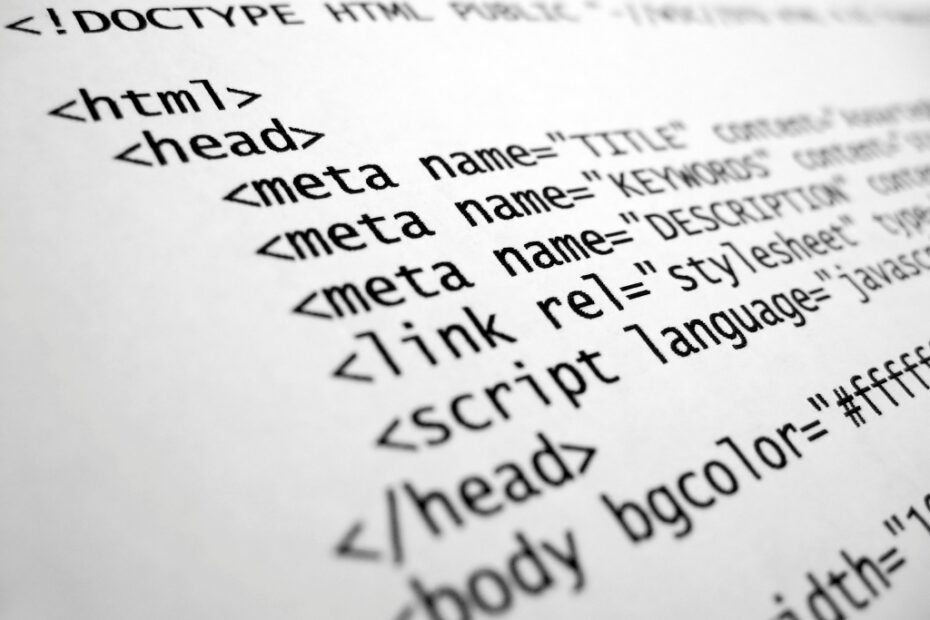Most webmasters don’t see coding as essential to their SEO. Thanks to the proliferation of web design apps, many don’t even consider the HTML and CSS details that make up their websites. Most webmasters see SEO as what happens after the coding is done, but this couldn’t be further from the truth. If you inspect your website’s source, you’d realize that the SEO elements form part of the code. Entrepreneur states that search engine bots utilize the source code to index it for search results. Coding, therefore, is essential to SEO. In this article, we’ll offer some advice to make your code more SEO-friendly.
Validate Your Code for Search Engine Bots
When you break it down to its most basic level, search engine bots can only read text information. If you look at your website’s source code, you’ll realize that all of your images have “alt text” tags that help these bots (commonly known as “spiders” since the “crawl” a page) to figure out what’s in the image. Validating your code for textual spiders isn’t as hard as you’d think. Webconfs offers a handy Search Engine Spider Simulator to demonstrate how your page will look to a spider once it crawls it. If you notice gaps in the simulator, you should try to improve your strings and validate again. Closing these gaps in your bot-readable format makes it much more likely for your page to show up in keyword searches.
Clean Up and Optimize Your Code
Initially, your website might have clean code with fast loading times, but with each new addition to the source code, your website becomes more cumbersome. Some websites have so many addons from their initial iteration that their loading time increases significantly. Breaking down the code can help you spot critical ways to optimize and speed up your site. There’s no single cure-all that solves all the problems in a web page’s code, however. Among the most common issues leading to poor site performance that’s easily spotted in your code are:
- excessive use of whitespaces
- unpaired and orphaned tags
- broken or invalidated URLs
Several tools can be used to find and fix these problems.
Use your noindex Tags When Necessary
Moz notes that the noindex parameter in the page’s source code tells a spider not to index that particular page. You may want to avoid indexing individual pages because you don’t want them showing up orphaned in search results. An example of some of the pages that may be useful to run noindex tags on are:
- Shopping Carts
- Contact Pages
- Blog Archives
- User Dashboards
These pages don’t actually say anything about your site, but they are useful in their own ways. Using noindex directs the spiders to skip over them when crawling your website. There’s no direct way to control the spiders, but this at least gives you some control over what they index.
Look At The canonical Tag
It’s a capital SEO sin to have duplicate content according to SEO Malaysia, but HTML offers a simple solution by using the canonical tag. Duplicate content isn’t a problem if you’re building each page from scratch, but CMS systems such as WordPress of Joomla tend to use templates for putting websites together. The canonical tag gives you a chance to avoid getting penalized for templated pages by using one page as the “true” version. The canonical tag shows up in the head portion of your page’s HTML and can help you from getting hit with strikes from search engines for duplicate content.
Don’t Overlook 301 Redirects
301 redirects are the clean and optimized way of redirecting users to your pages. From an SEO perspective, there are two distinct scenarios where 301 redirects are of importance:
- When the www and non-www versions of your page URL are the same, you can use a 301 redirect to shunt the user to the correct page and update the search spider on the new address.
- If you decide to move around content or shift the URLs of specific resources around, the 301 redirect is a useful way to push traffic to the new location and inform the search spiders of the move in one single, optimized coding pattern.
SEO Is Crucial For Success
Getting eyes on your content depends on having the right keywords and being SEO compliant. While many businesses now rely on ads for their marketing, a significant amount still look to search engines to push visitors their way. With the right setup, a company could draw hundreds of thousands of visitors a month who all want to buy what they’re selling. It depends on how invested they are in their SEO research and implementation. While page builders are still a massive part of developing a responsible, sleek site, don’t overlook the insights that reading your page code can give you. It pays to be able to read HTML like a search spider.
